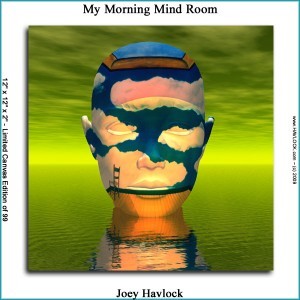Shaping Mind Rooms to Reframe the Meaning of Tasks
“[G]ood feelings such as affection, pride at a promotion, and enthusiasm for a new project are the carrots on the stick that keep you moving smartly along life’s up-and-down road.” – Winifred Gallagher, RAPT: Attention and the Focused Life (Penguin Press, 2009)

Organization can dog the best of creatives. Many of my clients are writers, artists, and entrepreneurs who juggle multiple projects and obligations. I keep at least five projects in the air at any given time, each of which requires at least a few dozen tasks to complete.
So how do we stay on top of those projects without driving ourselves daft and our intimate partners away? How can a small amount of time invested in flexible creative organization end up saving time?
Creative organization can be a flexible, enjoyable way to shape attention, physical space, and actions. When we shape these three things – attention, space, and actions – we increase the likelihood that we can get in that flow that psychologist Mihaly Cskiszentmihalyi describes.
For over 15 years, Cskiszentmihalyi has studied people who like to do things that they enjoy but are not rewarded for with money or fame. He has studied athletes, artists, religious mystics, scientists, chess players, rock climbers, and ordinary working people. What keeps these creatives jazzed about what they do is how they feel while doing what they enjoy. This feeling doesn’t come when they are relaxed or taking drugs and alcohol or consuming the “the expensive privileges of wealth.” “Rather,” he says, this experience involves “risky and difficult activities” that “stretched the person’s capacity and involved an element of novelty and discovery.”
Ultimately, simple creative organization can help create the conditions for us to be in flow more often. Creative organization can help us enjoy our work and tasks, be gratified by taking regular steps toward big projects, and feel as if we are the agent of what happens in our creative life – that we’re the creative actor and not the helpless actee.
One tool of creative organization is what I’ve been calling “Mind Rooms,” a tool I’m experimenting with on my own projects and with my clients.
Think of rooms in a building. A room shapes physical space. Its demarcation from other rooms suggests its function and what you’ll spend your time doing in that room. Traditionally, a house’s physical rooms had distinct functions. You cooked in the kitchen, ate in the dining room, lounged in the living room, evacuated in the bathroom, and slept in the bedroom. Of course, functions spill over. Despite what some Feng Shui consultants might advise, we gather and chat in the kitchen. We eat in whatever room is convenient. We nap on the living room sofa. We work in the bedroom.
A Mind Room shapes mental space. It’s a tool to help the mind focus on one project at a time, give meaning to multiple small tasks, and keep taking consistent creative action toward completing projects. Ultimately, using Mind Rooms can help you see at a glance where your mind is spending time and where your actions are prioritized or not.
Here are four steps to create Mind Rooms:
1. List the large categories of what your mind focuses on for your work. These categories will become your Mind Rooms. For instance, my work all falls under four categories: Writer, Tracking Wonder (consulting and programs), Center To Page (my LLC devoted to mentoring & coaching writers), and Yoga as Muse (programs and training). Granted, one room feeds the other the way my study feeds my client conference room, but they each still have mutually exclusive functions. One client’s categories are Writer, Professor, Events Coordinator. Another client’s categories are [name of big copy writing/marketing client], Other Marketing Clients, her novel. Another client’s categories are Writer, Yoga Teacher, and Writing Coach.
Of course, we each have personal Mind Rooms that merit shaping. Mine include Family, Friends, and Homesteading. But for now let’s focus only on the work-related rooms.
2. Rename these rooms if doing so gives them more personal meaning. Let’s say that you are excited to amp up your client service this year. So, you rename your “Other Clients Room” to “Client Astonishment Room.” That simple shift highlights and reminds you of your emotional and personal goal.
3. List a number of work-related tasks you need to take action on within the next week, two weeks, or three weeks – or review your existing list or scheduler of action items. Place each task within a Mind Room. While creating this list of tasks, you might realize you need to add another Mind Room. Go ahead.
![]() So, rather than having a long, random to-do list to get things done, you will have three to six columns or rooms of action items. Here is what my Mind Room list looks like on the dry-erase wall adhered to the back of my study’s barn door. Each Room has a correlating color. In a future post, we’ll explore visuals and ways to shape physical space.
So, rather than having a long, random to-do list to get things done, you will have three to six columns or rooms of action items. Here is what my Mind Room list looks like on the dry-erase wall adhered to the back of my study’s barn door. Each Room has a correlating color. In a future post, we’ll explore visuals and ways to shape physical space.
You might create partitions for projects within your Mind Rooms. Within my Writer Mind Room, I have divided space for The Book, Short Stories, Poems, and Blogs. Currently, The Book and Blogs are more occupied than the other two.
This simple step brings flexible order to an overcrowded mind. At a glance, the list also will help you see which room you need to spend more or less time in.
This shaped list also reframes our small tasks into meaningful rooms. Reframing is an empowering tool to help us creatives stay motivated. From the work of Positive Psychology psychologists, reframing shifts us from learned helplessness to empowered thinking, feeling, and action. So, instead of seeing “buy envelopes” or “send our client letters” on a list of 38 random to-do items, these tasks now sit in the Client Astonishment Room.

4. Paint your Mind Rooms. We paint rooms in our house and office for a reason. We want a room to evoke a mood that matches its function. We want to feel a certain way in that room. Maybe we want to endow the room with our personal signature. A bedroom painted Mediterranean sunset orange evokes a different mood than a red reading room.
So give each of your mind rooms a distinct color. You can see the color of each of my four rooms above under #1. Each of these colors means something to me. My mind also likes some order, and the colors visually help my mind stay ordered (See the white wall photo.) Aesthetics matters to productive, successful creative people. Color-coding our task categories (a flat translation of “Mind Room”) can bring small delight and pleasure. Ample evidence points to the fact that positive emotions keep us going. Behavioral scientist writer Winifred Gallagher reviews this research in her highly readable book RAPT: Attention and the Focused Life (The Penguin Press, 2009). She notes, “[G]ood feelings such as affection, pride at a promotion, and enthusiasm for a new project are the carrots on the stick that keep you moving smartly along life’s up-and-down road.”
If we enjoy our work – even the small tasks – we’re more likely to be more productive and efficient. A small time investment in remodeling your mind might pay off in the long run.
Future blog posts here will offer ideas related to shaping physical space and taking action.
Let me know what you think, and please share your own ideas and resources that help you and others creatively organize the mind.
See you in the woods,
Jeffrey
0 Comments